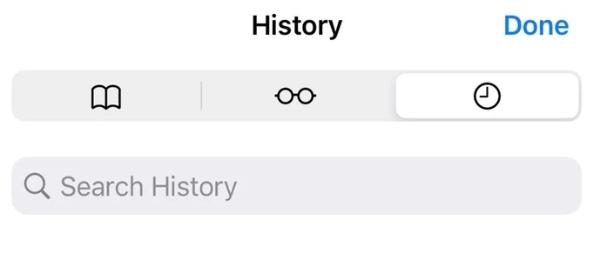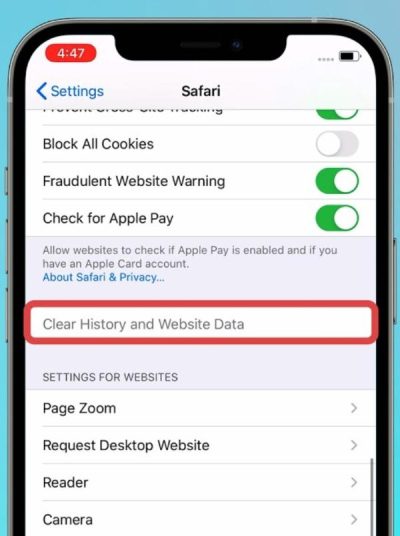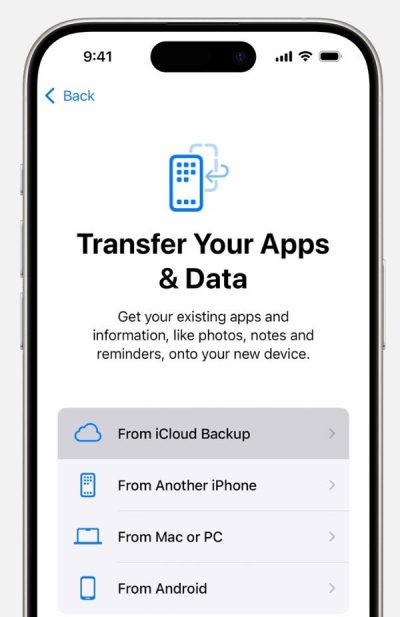Safari is Apple’s official web browser. It was released in 2003 and is known for its efficiency and privacy. As the default browser for millions of users, Safari plays a crucial role in how people access the internet. Modern times have made privacy a major issue for all internet users, be it individuals, families, or businesses. Safari history creates a record of the sites you check, terms you search, and your page visits. So, in a way, it shares your activity with everyone using the same device.
If you want to hide what you look at on the web, you should learn how to remove your browsing history. This guide shows you how Safari history is useful, how to control it, and how to safeguard your privacy.
What is Safari’s history?
The Safari browser on your Apple products stores your webpage visits, search terms and cleared files in Safari history. Any time you use Safari on the internet, this data is automatically saved. Although browsing history makes it easy to reopen saved websites, it may risk your privacy. In case someone uses your device, they can check your browsing history. Clearing your browsing history on Safari makes your online actions private.
Safari saves the history of your internet activity on your device automatically. As a result, each visit to a website, your search queries, and what you do on a site will be saved by the browser running on your iPhone, iPad, or Mac. Anyone who cares about privacy needs to clean their browsing history on a regular basis. In addition, managing this history is a helpful option for parents trying to keep inappropriate material away from their children.
How does Safari history work across Apple devices?
All Apple devices linked to the same ID have access to your history from Safari via iCloud. Assuming iCloud syncing is switched on in Safari, the history of a website you visited on your iPhone will also appear on your Mac or iPad.
As a result, people can stay on the same web page while switching from one device to another. Besides, if someone gets your Apple ID or device, they have access to all your website visit history from your Apple devices. As a workaround, you can turn off Safari’s iCloud sync to prevent this issue.
If you sync Safari history, your online actions will all appear together in one place. People who care about privacy should give a thought to the fact that their internet history is stored on numerous devices.
What information is stored in Safari history?
All kinds of information from your browser sessions is automatically stored in your Safari history.
- Website URL: Every site you visit sends its URL to your browser, which is saved. By doing this, Safari can easily reload old pages and make browsing easy.
- Search Queries: Safari logs the terms you enter in its search as you might look at these search queries again, finding out what you like, how you act, or what you care about.
- Visited Pages: Safari saves every single web page you see, not just the starting homepage.
- Cached Data: Safari keeps a copy of some website data in its cache so that it can load those sites more quickly next time you visit. It covers images, scripts, and other resources that let you browse faster the next time you visit a website.
You may find that tracking data is useful on websites, but it is not always safe for your privacy. Examples include recalling those websites you have visited, finding online shopping receipts, and even discovering where you have made private searches. Whenever privacy matters, clearing both your browsing history and cached information is crucial.
Is Safari history synced through iCloud?
If iCloud is turned on in Safari and all your Apple devices are connected to the same iCloud account, Safari history will be synced across all of them. Your browsing data saved on your iPhone can be reviewed on your iPad or Mac. Your device will also show the history from any other phone or device you have used.
Thanks to syncing, users are able to move from one Apple device to another without accidentally missing where they were on the web. However, this leads to concerns about privacy. Anyone who knows your Apple ID and password could check your whole browsing history on any device linked to iCloud.
Users have the option to turn off iCloud syncing for Safari. As a result, history, bookmarks, and tabs would not be the same on all your devices. This way, anything you do with your browsing history, like removing it or adding bookmarks, will only happen on a single device.
Gain peace of mind with real-time monitoring of your child’s online activities.
How to view Safari history?
It is easy to check your browsing history in Safari. Here is how you can view your history on an iPhone:
1. Open the Safari app on your iPhone.
2. Tap the bookmarks icon at the bottom of the screen.
3. Simply tap the History tab when you open the bookmarks menu.



4. Now you will see a list of websites you have visited, organized by day or month.
5. Click on any website you see to revisit it.
This feature is also useful for reviewing your browsing activity to see if there are any suspicious entries. The history of all your devices running Safari will sync through iCloud and show up in this area of Settings.
How to delete Safari history?
It is quite simple to delete your Safari history to help protect your privacy. Listed below are some common methods to clear your browsing history.
Clear all history and website data manually.
Deleting your entire Safari history and website data can be done through the following steps:
First, go to the Settings page from your home screen.
Then, scroll down the screen and tap Safari.
Tap on the Clear History and Website Data option.



Finally, you will see a confirmation message come up. Go to the Clear History and Data option to verify.
This method will remove all browsing history, cookies, cache, and website information. This makes it easy to prevent any of your online visits from showing up on your device.
Delete specific entries only.
If you want to delete some specific entries only, follow these steps:
1. Launch Safari on your iPhone, iPad, or Mac.
2. Tap the bookmarks icon that is located at the bottom of your screen.
3. Hit the History button.
4. Find the website you want to remove and swipe left on it.
5. Tap Delete to remove the entry.
By using this method, you can see the rest of your browsing history while eliminating unwanted sites.
Can kids secretly clear Safari history? What parents need to know.
Children will sometimes try to erase their Safari history to hide what they have searched. Though kids may erase their browsing records, parents do not have to worry, as there are ways to keep an eye on their browsing activities. That said, there are some things parents need to consider:
- Easy to delete: You can easily clear Safari history without knowing anything technical. It is simple for kids to use the settings to remove their web history.
- Monitor iCloud: If your children have iCloud connected devices, you can view their entire browsing history from iCloud. However, this means you need to use their Apple ID.
- Set up restrictions: With Screen Time, you can easily control what your child sees and does on their device. As a result, your child would not be able to delete their history, go to certain websites, or change Safari settings.
- Educational approach: Instead of just stopping children from deleting history, parents ought to instruct them on using the web responsibly and keeping themselves safe online.
Even though Safari history can be emptied, parents can still watch and control their child’s internet browsing. Parental controls can keep your children away from inappropriate sites or videos.
How to recover the deleted history of Safari?
When you delete your Safari history, it may be hard to get it back. However, there are certain methods that might work:
From iCloud backups
If you save your device’s data to iCloud often, you may be able to bring back your Safari browsing history by performing a backup recovery:
1. On the Home screen, tap Settings > General > Reset.
2. Press Erase All Content and Settings.
3. After resetting your device, press Restore from iCloud Backup.



4. Pick a backup with the old history.
Since a restored backup overwrites your current information, remember to back up anything you want to save before starting the restoration process.
Using third-party recovery tools
There are many tools that claim they can recover your deleted Safari history. They frequently need you to connect your phone to a computer and run a scan for deleted data. Even so, not all these sites are dependable, and users might have to pay to gain access to all their benefits. You should select a trustworthy recovery tool so that you do not fall for malware or scams.
Can Safari history be restored after deletion?
After Safari history is gone, it is difficult to restore it, unless you use iCloud or third-party programs. Apple does not offer a built-in option to restore deleted browsing history, so it is usually gone if there is no backup.
Set up parental controls for safer website browsing
Enabling parental controls on Apple products helps protect children when they visit websites. Try these simple steps:
1. Block inappropriate websites: You can protect your child by turning on Content & Privacy Restrictions through Settings > Screen Time and setting which sites or content you wish to block.
2. Set Screen Time limits: Restrict the time your children are on the internet. This helps ensure they see less harmful material. With Screen Time, you can add a daily limit to all website and app usage.
3. Receive browsing reports: Screen Time lets parents see both a summary of browsing activity and reports that show which websites were visited, along with the dates and times.
If your child knows his way around these methods, you’ll have to rely on tools like FlashGet Kids. This app features advanced tracking capabilities, including live monitoring, app blocking, usage tracking, and keyword alerts. Although some of these features have yet to be released for FlashGet Kids on iOS, you can still monitor your child effectively when relying on this parental control tool with their Android phone.



Conclusion
Safari’s history feature helps web browsing, but it may compromise your privacy. Managing online privacy becomes easier when people understand how to see, delete, or recover their Safari history. Setting up Safari parental controls for your child will keep them safe and allow you to monitor what they do online. FlashGet Kids provides each device with added safeguards. However, at this time, it cannot be used on iOS platforms, but updates might resolve this soon. It is essential to delete your Safari history often and use monitoring tools to secure your privacy and remain safe online.

